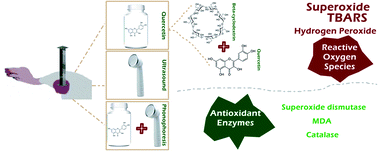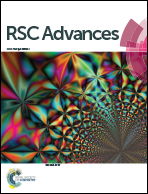A novel quercetin/β-cyclodextrin transdermal gel, combined or not with therapeutic ultrasound, reduces oxidative stress after skeletal muscle injury
Abstract
A gel containing the inclusion complex of quercetin and β-cyclodextrin was developed in order to verify its effects, isolated or using phonophoresis, on oxidative biomarkers after skeletal muscle injury. 30 male rats were divided into one of five groups: Control (CTRL), Muscle Injury (MI), Therapeutic Pulsed Ultrasound (TPU), Therapeutic Pulsed Ultrasound plus Quercetin (TPU plus gel-QUE) or Quercetin gel (QUE). Quercetin gel was complexed with β-Cyclodextrin (β-CD) using chromatography (HPLC). TPU and quercetin application occurred with 2, 12, 24, 48, 72, 96 hours intervals after injury. Gastrocnemius muscle was injured by mechanical trauma. Lipid peroxidation, superoxide dismutase activity, and catalase activity were assessed. The inclusion complex exhibited adequate entrapment efficiency, relative density and pH. The viscosity of the complex showed a non-Newtonian pseudoplastic behavior. Quercetin/β-cyclodextrin gel reduced lipid peroxidation, superoxide dismutase activity and catalase activity compared to muscle injury group. Similarly, phonophoresis and TPU also reduced the levels of these oxidative biomarkers. In conclusion, quercetin/β-cyclodextrin transdermal gel reduces oxidative stress biomarkers after skeletal muscle injury irrespective of using phonophoresis.



 Please wait while we load your content...
Please wait while we load your content...